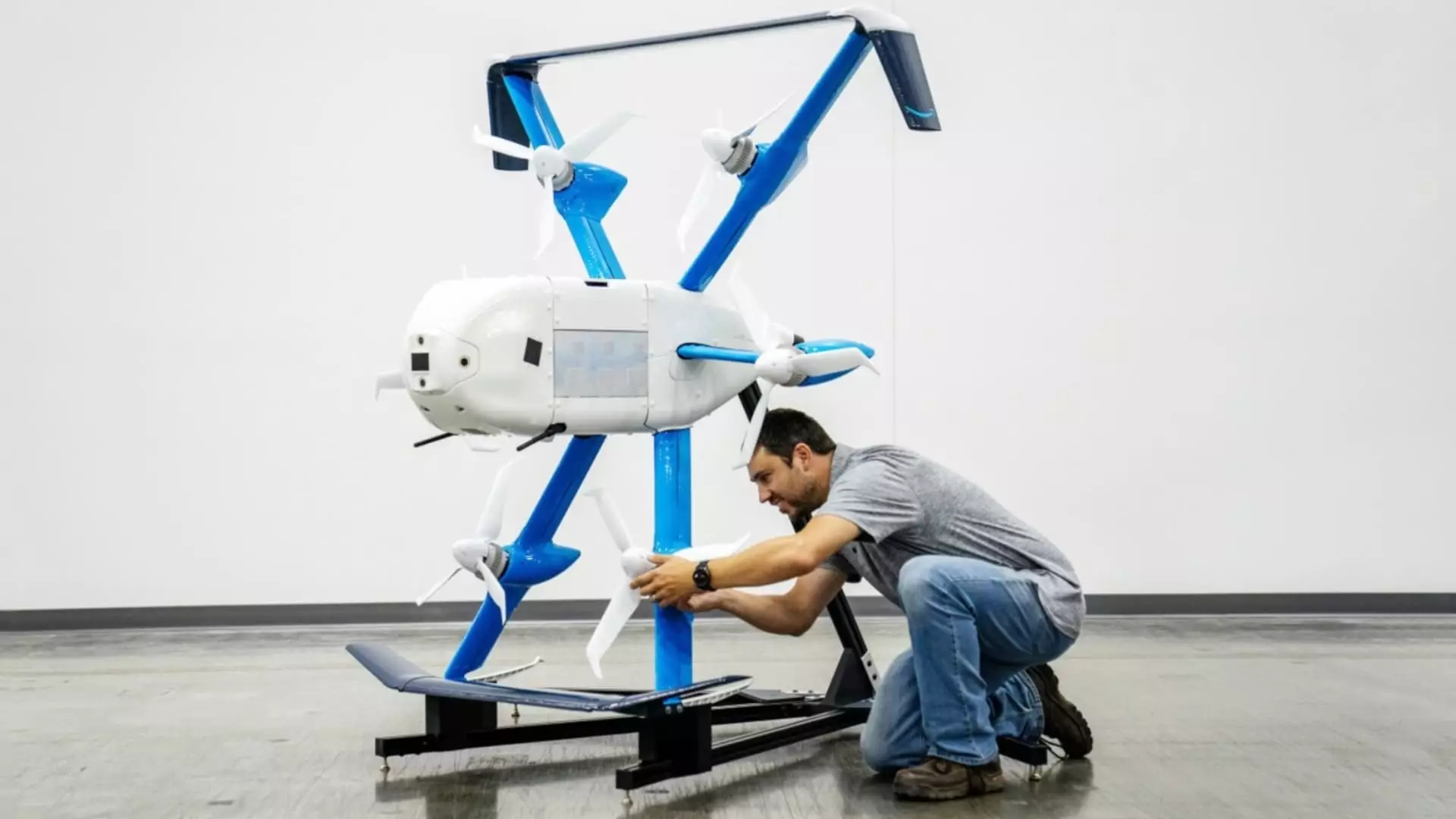Amazon’s Prime Air service is re-entering the delivery drone race after an extended pause, with operations resuming in College Station, Texas, and Tolleson, Arizona. This reopening represents a significant milestone for Amazon, which has been on a lengthy journey to fulfill Jeff Bezos’s vision of rapid aerial deliveries. The company temporarily halted its drone program in January due to concerns over an altitude sensor anomaly that could skew the accuracy of drone operations. Such vigilance prioritizing safety sheds light on the operational standards Amazon aims to implement as it reintroduces drone delivery to consumers clamoring for quicker service.
The necessity of suspending operations was driven by dust-related sensor malfunctions, pointing to the complexities involved in maintaining and running an autonomous delivery fleet. While Amazon emphasized that it had never encountered any actual safety threats, this pause highlights a commitment to reliability and consumer confidence, fundamentals that current technological innovators must consider integral to their ethos.
Regulatory Challenges and Technological Innovations
After implementing a necessary software update and securing the green light from the Federal Aviation Administration (FAA), Amazon rejoiced in the resumption of drone deliveries, claiming an unprecedented surge in demand for their Prime Air services. While a daunting intricate web of regulations serves as a barrier, such regulatory approvals are instrumental for any tech-based venture involving public safety and airborne logistics. The endeavor to balance rapid service advancements alongside regulatory compliance will be one of Amazon’s greatest challenges moving forward.
Along with this, Amazon introduced the new MK30 drone—a model designed to mitigate the noise complaints they received from residents in delivery areas. Contemplating the distance between drone hubs and communities is vital for any steel bird swooping down from the skies, especially in suburban settings where tranquility is cherished. The MK30 promises a calmer delivery service, capable of flight in light rain, giving Amazon a slight edge in operational versatility.
Adjusting to the dynamics of urban landscapes and public reception should emerge as a focal point for Amazon. Managing technology-enabled services effectively is just as much about public relations and community integration as it is about logistics and operational efficiencies.
Missteps Ready to be Toyed with
However, as Amazon propels itself towards reclaiming the skies, it also faces scrutiny from previous setbacks causing turbulence for Prime Air. Crashes involving the MK30 during test flights remind stakeholders of the hurdles that remain—a prior incident showcased two drones colliding mid-air due to a pilot’s error, while another software-related incident led to two drones crashing. Such failures can be detrimental to public perception, meaning that they must be addressed both thoroughly and transparently.
The contrast between aspiration and reality depicts a journey fraught with high stakes and opportunity. Although some would argue that Amazon’s drone program is faltering under the weight of regulatory scrutiny and past incidents, those who believe in technological advancement cannot help but see the opportunities these challenges present. With the ambition to deliver 500 million packages annually by the decade’s end, Amazon’s sights are set high.
The Global Horizon: Potential and Pitfalls
As they seek international expansion, especially eyeing the UK market, Amazon’s mission reflects the need for exploration beyond U.S. borders. This critical focus suggests that, while local approvals can be cumbersome, potential international franchises may offer the opportunity for overcoming local challenges by leveraging technology across diverse environments.
Yet, the road ahead isn’t simply about strategy. With ongoing layoffs affecting various company divisions, including the drone program, the juxtaposition between expanding a cutting-edge service and curtailing operational costs raises questions about Amazon’s long-term vision. Balancing innovation with financial prudence poses an ongoing challenge.
Given the passionate conversations unfolding as buzz surrounding drone deliveries generates curiosity among consumers and skeptics alike, the real question persists: Can Amazon navigate this flight path safely while ensuring that dreams of drone deliveries become a contemporary reality rather than a fleeting glimpse of the future? The runway is set; it remains to be seen how Amazon navigates the tumultuous skies ahead.

